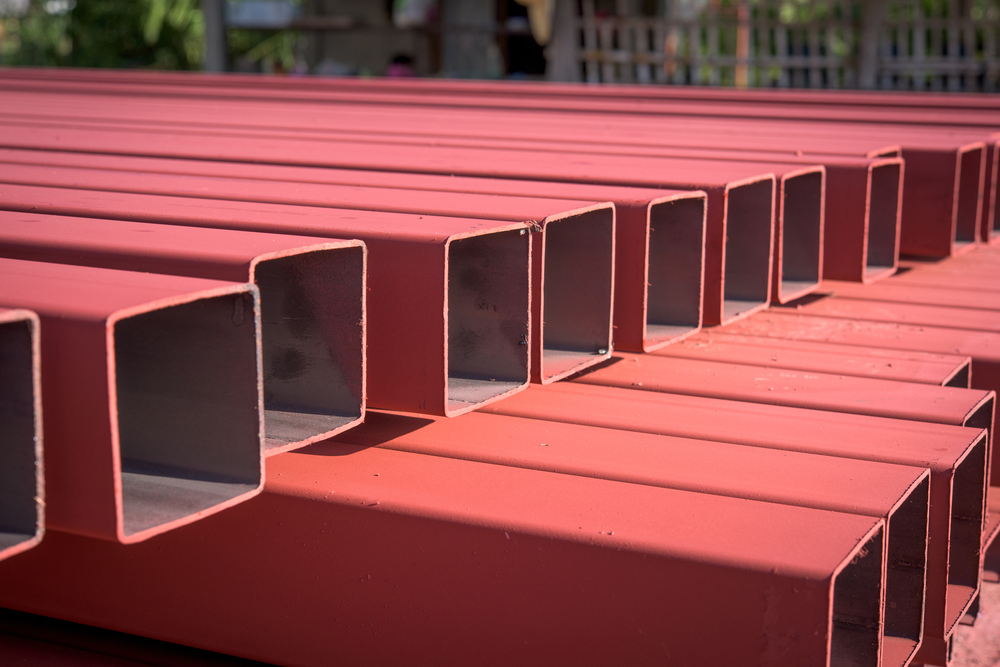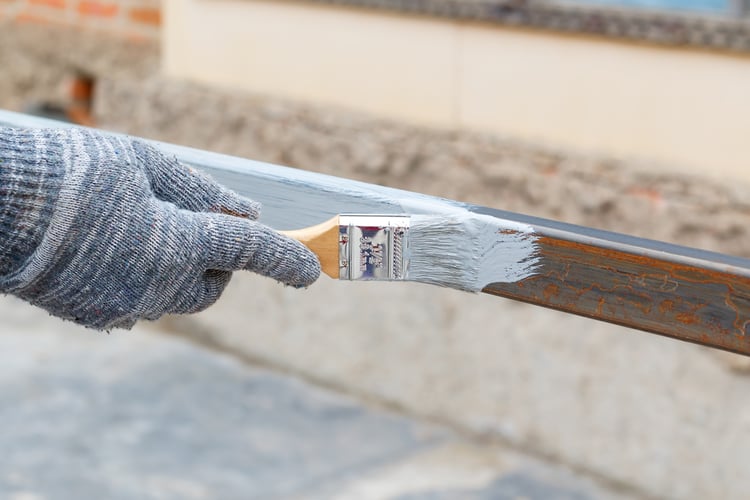Types of Paint Used in Construction

Since painting enhances the look of buildings, it is a common element of renovation projects. However, paints have additional uses beyond improving appearance. Knowing the performance features of each type of paint is important to select the best product for each application.
Painting is normally carried out for the following reasons:
- Protecting surfaces from insects, rain, solar radiation and other external factors
- Simpler maintenance: Well painted surfaces are easier to keep clean and safe
- Increasing the visual appeal of a surface
- Waterproofing
- Increasing surface durability
Before selecting the type of paint for a specific application, its physical properties must be considered. A good paint will offer the following benefits:
- Ease of application
- Reasonable drying period
- Forming a thin film without cracking
- Forming a hard and durable coating
- Its performance should not be affected by the weather
- Not harmful to users
Are your MEP systems using the right types of paint?
Types of Paint
Oil Paint
Oil paints use white lead as a base, and are applied in three coats: primer, undercoat, and finish coat. Oil paints can achieve mat and glossy finishes while being durable and affordable. They are characterized by their ease of application, and painted surfaces are easy to clean. Oil paint is commonly used in walls, doors, windows, and metal structures.
Note that oil paint is not suitable for humid conditions, and it takes time to dry completely. Also, before applying oil paints, linseed oil, and pigments must be added.
Enamel Paint

This type of paint is produced by adding lead or zinc to varnish. Pigments are added to achieve a wide variety of colors. Enamel paints form hard and glossy coatings, which are easily cleaned. They are characterized by being waterproof and chemically resistant, offering good coverage and color retention.
The following are some common uses of enamel paint:
- Interior and exterior walls
- Wood trims, doors, and flooring
- Windows
- Stairs
- Surfaces like wicker, masonry, concrete, plaster, glass, and metals.
The main limitations of enamel paint are slow drying, and requiring a titanium coating before application.
Emulsion Paint
Emulsion paints use polyvinyl acetate and polystyrene as binding materials, and they contain driers like cobalt and manganese. They can be water or oil based, and pigments are used to achieve the desired color. Emulsion paints are characterized by their fast drying and hardening, and surfaces can be cleaned easily with water. Once applied, enamel paints offer durability, good color retention, and alkali resistance.
Emulsion paints are commonly used for interior walls, ceilings and masonry work. Some specialized types of emulsion paints can be used for woodwork.
Cement Paint
Cement paint is available in powder form, which is mixed with water to achieve paint consistency. The base material is white or colored cement, and it may also contain pigments, accelerators and other additives. Cement paint is durable and waterproof, and it is commonly used in rough internal and external surfaces.
Consider that cement paint has a long drying time, typically 24 hours. It must also be applied in two coats to prevent dampness issues.
Bituminous Paint
This type of paint is made from dissolved asphalt or tar, which gives it a characteristic black color. It is waterproof and alkali-resistant, but not suitable for applications where it will be exposed to the sun, since it deteriorates.
Bituminous paint is commonly used in underwater ironworks, concrete foundations, wooden surfaces and iron pipes. It also helps provide rust resistance when applied in metals.
Aluminium Paint
This type of paint is produced by mixing aluminium particles with oil varnish. It is resistant to corrosion, electricity and weather exposure. Aluminum paint is commonly used for metals and wood, and some specific applications are gas tanks, oil tanks, water pipes and radiators.
Anti-Corrosive Paint
Anticorrosive paint is characterized by its chemical resistance, as implied by its name. It is made from linseed oil, zinc chrome and fine sand. Anticorrosive paint has a black color, and it is durable and affordable. It is normally used for metallic surfaces and pipes.
Synthetic Rubber Paint
This paint is made from dissolved synthetic resins, and can include pigments. It has a moderate cost and its main benefits are chemical resistance, fast drying and weather resistance. Synthetic rubber paint is used for concrete surfaces in general, and this includes fresh concrete.
Cellulose Paint
Cellulose paint is produced from celluloid sheets, amyl acetate and photographic films. Adhesion can be improved by adding castor oil, and surfaces can be easily cleaned and washed once the paint has dried. This type of paint is characterized by its quick drying, smooth finish and hardness, while offering resistance to water, smoke and acids. Thanks to its properties, cellulose paint is commonly used in cars and airplanes.
The main disadvantage of cellulose paint is its high price.
Plastic Paint
This paint uses water as a thinner, and it is available in a wide range of colors. It dries very quickly and offers high coverage. The following are some common applications:
- Walls and ceilings of auditoriums, showrooms, display rooms, etc
- Slabs
- Decks
Silicate Paint
Silicate paint is made from a mixture of silica and resinous substances. Its performance benefits include good adhesion, hardness, heat resistance, and being chemically unreactive with metals. Therefore, this type of paint is commonly used in metal structures.
Casein Paint
This paint is made from casein mixed with white pigments. It is available in powder and paste form, and pigments can be added. Casein paint is commonly used to paint walls, ceilings and wood.
Conclusion
As listed above, there are many types of paints and their applications vary greatly. The reasons to use paint in construction include visual appeal, surface durability, chemical protection and pest protection. Each type of paint is designed for specific applications - adequate paint selection can reduce project costs while improving performance.
Painting is often regarded as an aesthetic improvement for buildings, but it brings many technical advantages as well. These include chemical protection and easier maintenance.
Nearby EngineersNew York Engineers has a MEP design track record of 1,000+ projects. Contact us via email (info@ny-engineers.com) or phone (786) 788-0295212-575-5300, and make sure your building systems meet codes.

Anuj Srivastava
Anuj Srivastava is a principal partner at NY Engineers. He is known for his MEP franchise market knowledge. Anuj is currently leading a team of 100+ MEP/FP engineers and has successfully led over 1500 franchise projects in the US.
Join 15,000+ Fellow Architects and Contractors
Get expert engineering tips straight to your inbox. Subscribe to the NY Engineers Blog below.



